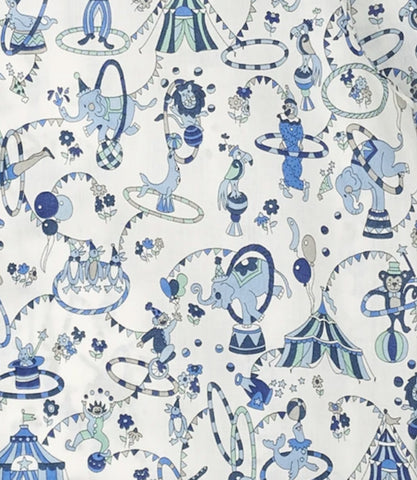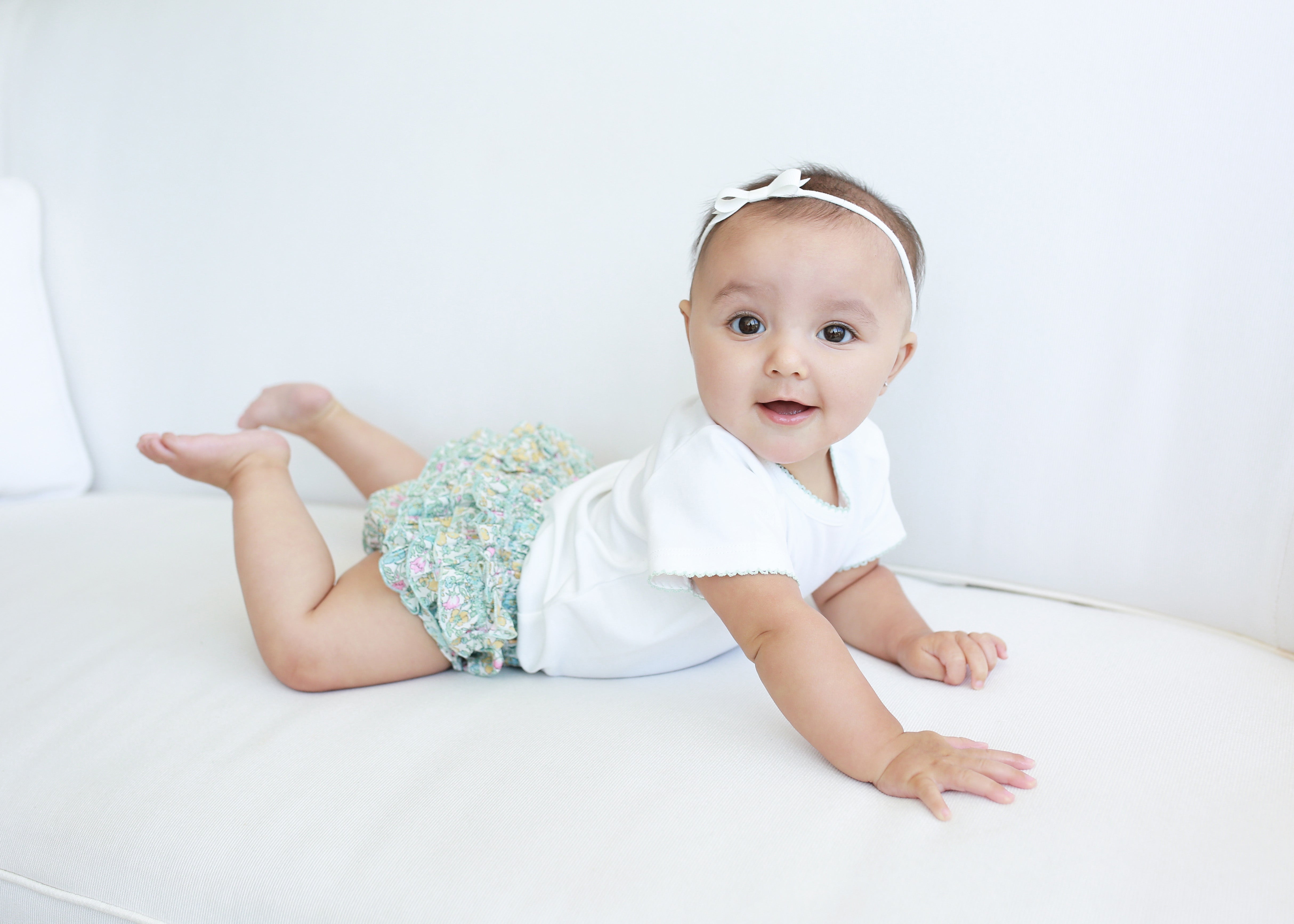 Hello, my little angels,
Hello, my little angels,
I am the Cashmirino bear mum, as you know I design and make clothing for children. Today, I’m s-o-o-o-o excited because I found a super-special, piece of cotton fabric that I’ve made into beautiful shirts and dresses for boys and girls! Do you see the piece of fabric here?
It is called a ‘Liberty print’ and it is from a famous shop in London. Do you see what is printed on it? What do you think it’s about? Can you tell? (Hint: It doesn’t come to town very often, but when it does, everybody wants to go! There are lots of different animals in it that can do amazing tricks…)

If you said it’s all about the circus, then you are correct!
Do you see all the different characters, juggling with balls and jumping through hoops and performing great balancing acts? If you look very closely, you will see there are lots of different types of animals (can you count how many?), as well as other performers like clowns and jugglers and even a man diving through a hoop (you can only see his legs!).
The reason I love this material so much is that there’s so much happening all at once. When I make my shirts and dresses with this, l believe they come alive – with all the fun of the circus!
Now let’s play a little game together to see how much you know about circuses. Even if you have never been to one, this piece of fabric will give you plenty of clues.
What animals would you find in the circus?
Well, there is no one answer to this question, because it really depends on how big the circus is, and what sort it is, too. Let’s start with the animals we can find on the fabric – there are lions, elephants, a rabbit, penguins, seals, a marmoset (clever little monkeys) and toucans (colourful birds with funny shaped beaks). Can you find them all?
There are lots of other animals you might find in the circus, too, like bears, tigers, camels, zebras, leopards, horses, parrots, cockatoos, as well as some more familiar ones, like cats and dogs.

What other types of performers (not animals) might you find in the circus? Let us look at the fabric once again to find some answers – there are clowns (one with a twisty body and another one riding a unicycle and holding balloons), as well as a juggler juggling lots of balls. The man jumping though a hoop could be a trapeze artist – which means he swings through the air, high up in the circus tent, and does tricks that most people couldn’t even do on the ground!

Other types performers you might find in the circus are tightrope walkers – they can walk along a rope way up high, and not lose their balance and fall, and fire-eaters, who can juggle batons of fire in the air, then put them in their mouth to extinguish them! You might also find magicians who can make rabbits appear out of hats, or acrobats, who are very flexible and can jump about and do tricks with their bodies in ways ordinary people can’t do.

What is a circus ringmaster?
The ringmaster is the one who directs the whole circus performance. He is called this because normally a circus happens in a round tent (do you see the tents on the piece of fabric?) in a circular space called a ring. The audience sits around the edge of the ring looking into the middle. The circus master is the one who introduces all the acts and manages everything that is going on in the ring. He makes sure everybody takes their turn to perform their acts or tricks, and no-one bumps into anyone else!

Where do circuses happen?
Circuses normally happen in cities, or large towns, which they may only visit once a year or less. This is because circuses are usually on the road, moving from one place to the next, and it takes time to visit all the cities or towns on their list. This is why not everyone has been to the circus – some children may not even have been born the last time the circus came to town!

When were circuses first invented?
The first circus started with horses, thanks to a man who was very good at training them. This man, Philip Astley, opened a riding school in London in 1768, where he taught his pupils how to perform with these beautiful creatures. Two years later, audiences were so impressed that he decided to introduce some variety, with acrobats, tightrope walkers and jugglers. The world’s first circuses were, therefore, a combination of horse shows with displays of strength and agility and, as the years went on, many different types of animals and acts were added.

So there, my sweet little audience, I hope you have learned a bit more about the circus, and next time the circus comes to town you’ll know just what to expect. I will check and see what other interesting things I can teach you from the fabrics that I use.





Leave a comment